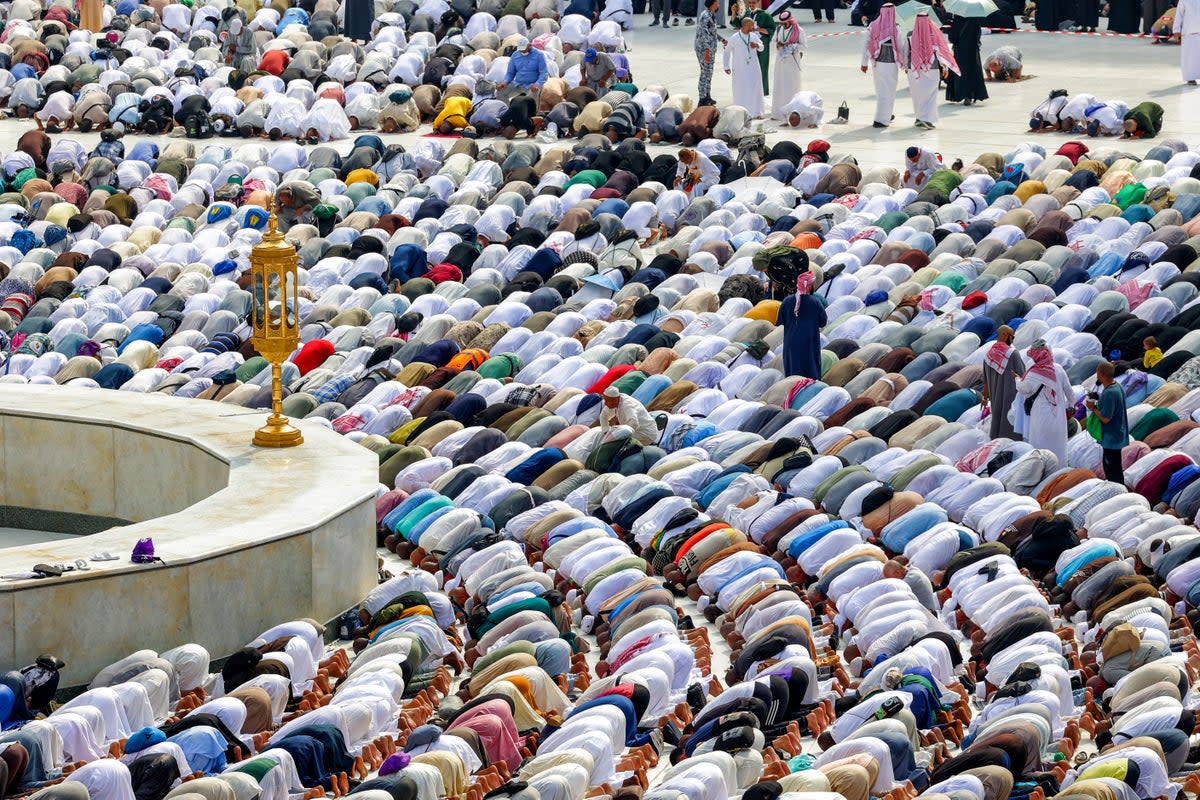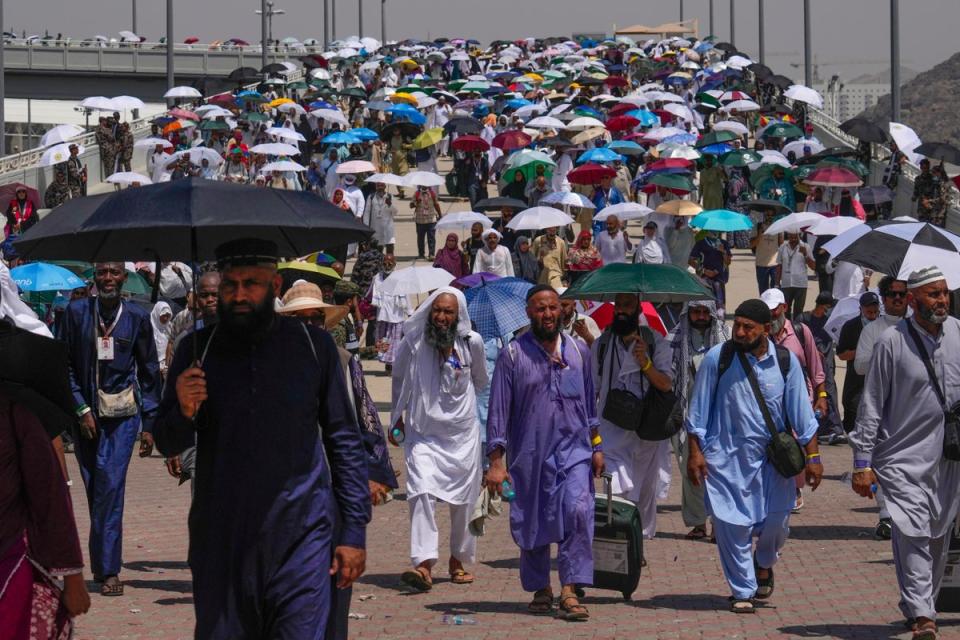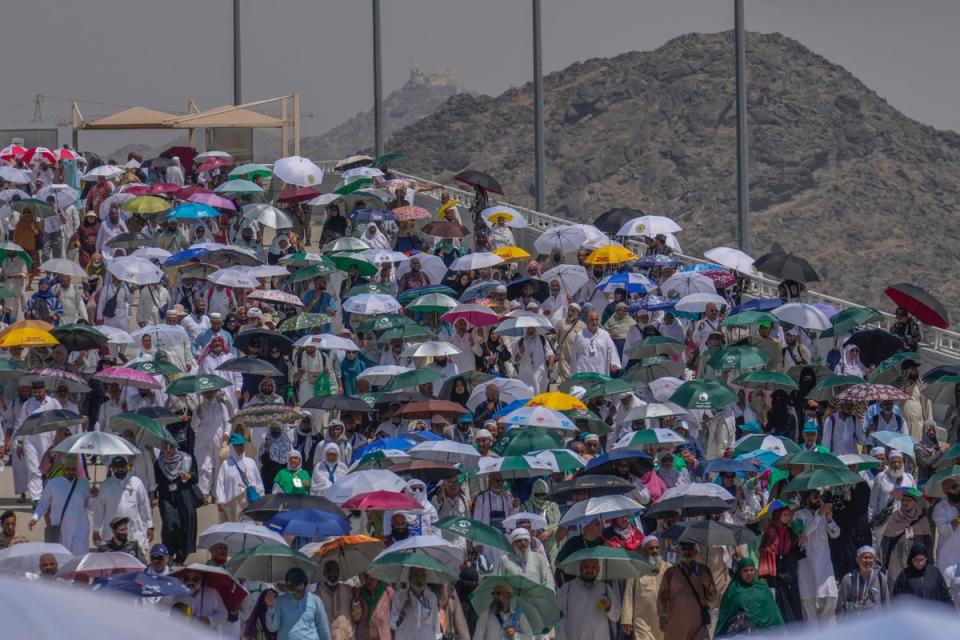Hajj pilgrim deaths surge past 1,000 as Saudi Arabia faces extreme temperatures

More than 1,000 people have died during this year’s Hajj pilgrimage in Saudi Arabia – with temperatures having reached a peak of 51.8C in Mecca in recent days.
Around 1.8 million Muslims have taken part in the days-long, mostly outdoor pilgrimage this year, which is a requirement of every Muslim able to partake at least once in their life.
The Kingdom of Saudi Arabia is yet to comment on the official death toll, though reports suggest around 10 countries have reported 1,081 deaths during the annual pilgrimage.
Hundreds of people lined up at the Emergency Complex in Al-Muaisem neighbourhood in Mecca, to claim their loved ones’ bodies and find information about their missing family members.
Outside the complex, an Egyptian man broke down when he heard his mother was among the dead. He cried for some time before reaching for his phone and calling their travel agent.

“He left her to die,” he shouted, referring to the agent. The crowd tried to calm him down.
An official read out names of the dead and the nationalities, which included people from Algeria, Egypt and India. Those who said they were relatives of the dead were allowed inside to identify the deceased.
An Arab diplomat told news agency AFP that deaths among Egyptians alone had jumped to more than 650, with 630 of them being unregistered. Each year tens of thousands of pilgrims attempt the Hajj through other channels as they cannot afford official permits. Saudi authorities have said that it has cleared hundreds of thousands of unregistered pilgrims from Mecca this month.
Out of around 150,000 pilgrims, Pakistan has recorded at least 58 deaths, a diplomat briefed on the tally told AFP. “I think given the number of people, given the weather, this is just natural,” the diplomat said.

Indonesia, which had around 240,000 pilgrims, said the nation’s death toll had reached 183 according to the Ministry of Religious Affairs. They added 313 deaths were due to heatstroke.
Khalid Bashir Bazaz, an Indian pilgrim, speaking near the Grand Mosque, said he “saw a lot of people collapsing to the ground unconscious”.
Deaths are not uncommon at the Hajj, There have also been stampedes and epidemics throughout the pilgrimage’s history. Each year, the Hajj draws hundreds of thousands of pilgrims from low-income nations, and illnesses can spread among the gathered masses, many of whom save their entire lives for the pilgrimage.
More than 1.83 million Muslims performed the Hajj in 2024, including more than 1.6 million from 22 countries, according to the Saudi Hajj authorities.

Saudi Arabia has spent billions of pounds on crowd control and safety measures for those attending the annual five-day pilgrimage, but the sheer number pilgrims makes ensuring their safety difficult.
Islam follows a lunar calendar, so the Hajj falls around 11 days earlier each year.
By 2029, the Hajj will occur in April, and in the next several years after that it will fall in the winter, when temperatures are milder.
A 2015 stampede in Mina during the Hajj killed over 2,400 pilgrims, the deadliest incident to ever strike the pilgrimage, though Saudi Arabia has never acknowledged the full toll of the stampede.
Additional reporting by AP
